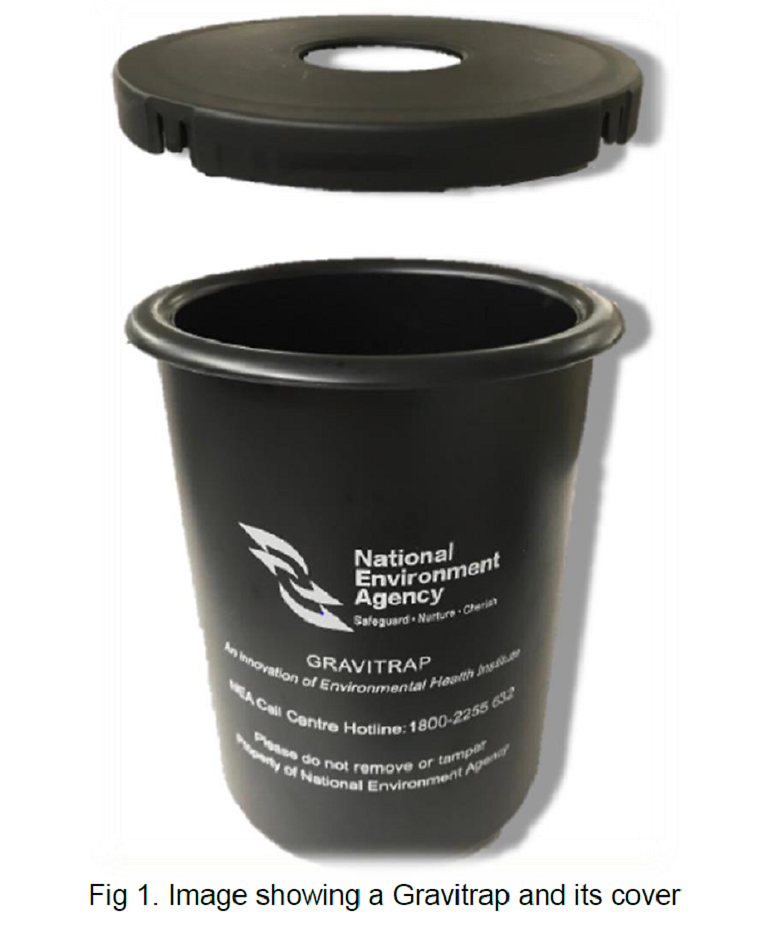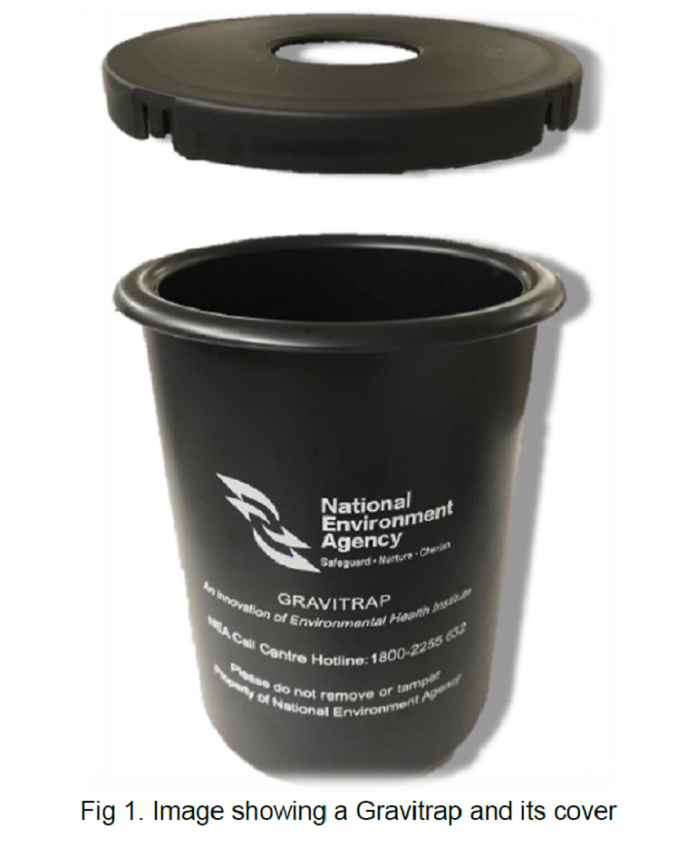SINGAPORE: The National Environment Agency (NEA) on Friday (Aug 23) said that its Gravitrap system – which is designed to attract and trap female Aedes mosquitoes looking for sites to lay their eggs – enabled it to detect and destroy 21 per cent more breeding habitats in 2018 compared to the previous year.
Gravitraps have also been useful in helping NEA remove a large number of Aedes aegypti adult mosquitoes, including infected female mosquitoes, the agency said in a media release.
About 50,000 Gravitraps have been deployed at Housing and Development Board (HDB) estates islandwide since NEA began using the system in 2017.
Another 14,000 traps will be rolled out at landed estates and newly completed HDB areas from the second half of this year, NEA said.
“Resource optimisation from such a data-driven surveillance system has also allowed NEA to re-deploy manpower for other urgent dengue prevention tasks,” it added.
READ: 4 more die of dengue, 9 deaths in total in 2019: MOH, NEA
READ: About 900 households fined between January and May as NEA calls for ‘collective effort’ to tackle dengue surge

NEW INDICATOR ON AREAS WITH HIGHER MOSQUITO POPULATION
NEA also said on Friday that it has launched a new initiative to share information on areas with relatively higher Aedes aegypti adult mosquito population.
This information, gathered from the Gravitrap surveillance system, will be shared on their website from Friday and updated monthly.
The new mosquito indicator aims to heighten the awareness of the risk of dengue and guide the public in taking more proactive prevention measures, according to NEA’s release.
The additional Gravitrap surveillance data can also help Town Councils priorities their dengue prevention and control measures, as well as target areas with higher mosquito population, it added.
NUMBER OF WEEKLY DENGUE CASES REMAINS “PERSISTENTLY HIGH”
Over the past six months, NEA said that it has been working intensively with stakeholders from various government agencies in the Inter-Agency Dengue Task Force (IADTF), town councils, construction site management, community partners and residents, in order to strengthen collective efforts in the fight against dengue.
These efforts have enabled NEA to close 854 of the 1,013 dengue clusters this year.
The number of weekly dengue cases has also declined from a high of 664 in the second week of July, to 525 in the second week of August.
Some of the largest dengue clusters in Woodlands, Upper Thomson, Chai Chee and Pasir Ris have also closed, with some still under close surveillance, NEA said.
Despite this progress, NEA said that the number of weekly dengue cases remains “persistently high” at above 500.
READ: More mosquitoes or mutating virus? Experts have different views on dengue spike
READ: Bigger Aedes mosquito population identified as key reason for surge in dengue cases
A worker fogs the drains in the common areas of a public housing estate in Singapore. (Photo: Reuters/Edgar Su)
“Even as clusters are progressively closed, we still have some rather persistent clusters, such as at Aljunied Road and Changi Road, as well as newer clusters being formed, in Choa Chu Kang Avenue 2 and 4 and Jalan Eunos,” NEA said.
NEA’s director-general of public health, Mr Chew Ming Fai said: “With the high number of dengue cases this year, we need to take a holistic whole-of-community approach to fighting dengue, focusing on both dengue cluster areas as well as non-dengue cluster areas, which may be at risk of becoming dengue cluster areas in the future.
“We hope that the sharing of information on areas with relatively higher mosquito population will serve as a useful lead indicator for our stakeholders to take pre-emptive measures in reducing potential mosquito breeding habitats, thus lowering the risk of dengue transmission and future clusters from being formed.”
Singapore’s high Aedes aegypti mosquito population has been identified as one of the key reasons for the high dengue cases experienced this year, in addition to lowered population immunity and warmer weather.
“Climate change is anticipated to worsen the spread of dengue, as higher temperatures facilitate faster development of the Aedes aegypti mosquito vector and faster replication of the dengue virus,” NEA said.
The agency urged members of the public to play their part in preventing and stopping dengue transmission, adding that vigilance and action is needed by all to eliminate potential mosquito breeding habitats.





